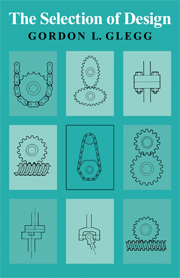Summary
I have done all the hard work so far: it is your turn to do some now.
‘What do you mean?’
I want you to invent something.
‘By myself?’
More or less. I'll try to help you if I can.
‘What am I supposed to invent?’
Why not a substitute for wood? It is still the most popular building material: find an alternative, preferably a better one.
‘Do you mean that I have to sit down and invent some revolutionary new plastic?’
No; that is exactly what you must not do. It would be a waste of time. Leave jobs like that to the chemists and physicists, they'll be better at it. An engineer selects and arranges combinations of known materials; not unknown ones. He is an opportunist; he exploits for the benefit of the community the discoveries of science.
See if you can produce a composite material with the good characteristics of hard wood but without the bad ones.
‘What's so good about wood?’
You could have answered that yourself. Wood is very useful in that it is strong, light and you get a good volume of it for your money, but bad in that it rots, catches fire, gets eaten and warps.
‘How am I supposed to start?’
You may remember that in designing a mechanism we began with the various basic designs and then modified them to suit other conditions fed in in turn.
- Type
- Chapter
- Information
- The Selection of Design , pp. 53 - 64Publisher: Cambridge University PressPrint publication year: 1972

